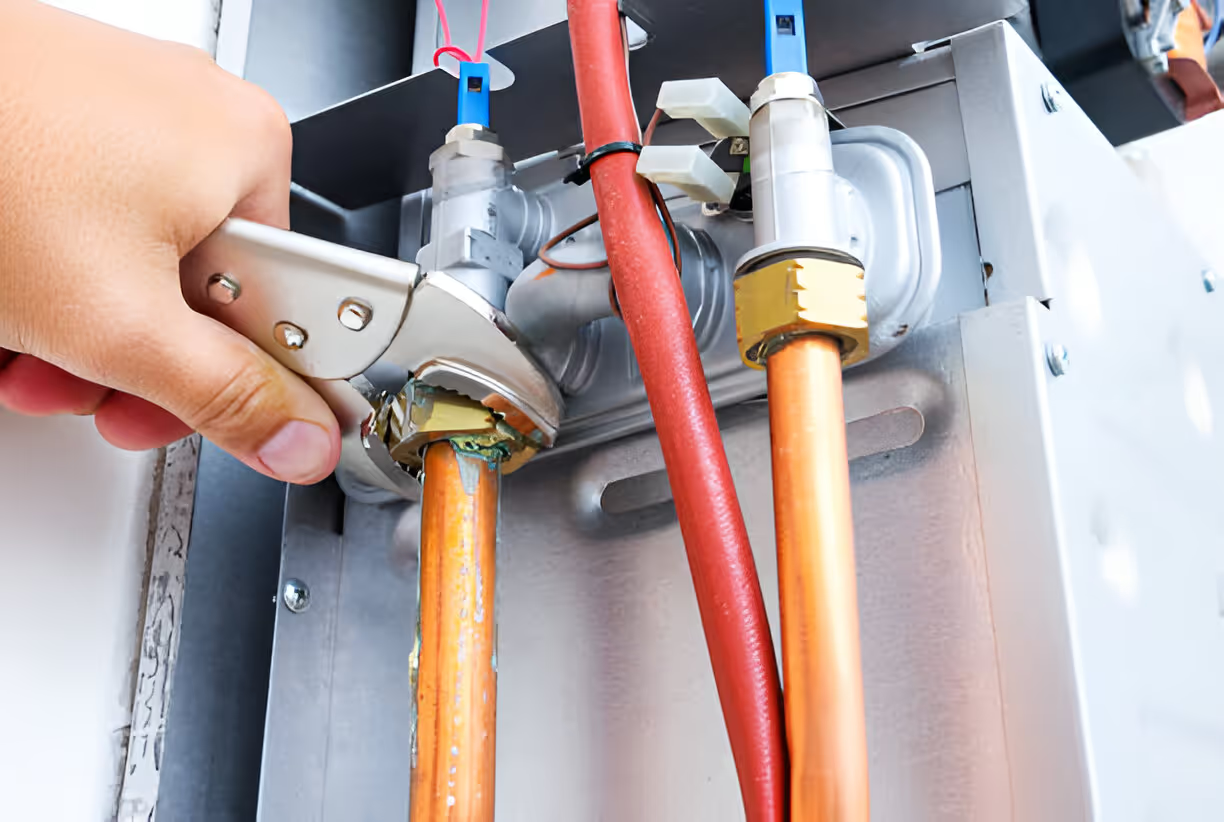Gas Furnace Maintenance in Chandler, AZ
Keeping your gas-fired furnace properly maintained is about more than comfort — it is about safety, efficiency, and reliable heating when you need it. In Chandler, AZ, where winters are short but can still bring chilly nights and occasional cold snaps, routine gas furnace maintenance prevents unexpected breakdowns and reduces the risk of carbon monoxide exposure. This page explains what a professional gas furnace maintenance visit includes, common maintenance issues in Chandler homes, safety checks, and the practical benefits of regular service.

Why professional gas furnace maintenance matters in Chandler, AZ
- Safety first: Gas furnaces burn fuel; a cracked heat exchanger or improper venting can allow carbon monoxide into living spaces. Professional inspections focus on identifying these hazards before they become dangerous.
- Desert-specific challenges: Chandler’s dry climate, seasonal dust, and monsoon storms increase airborne particulates that clog filters and coat burners. That reduces combustion efficiency and can trigger premature wear.
- Seasonal use pattern: Furnaces in Arizona often run sporadically. Start-up and shutdown cycles increase the chance of ignition or control issues; an annual tune-up ensures reliable operation when temperatures drop.
Common gas furnace maintenance issues in Chandler homes
- Dirty or clogged air filters and burners from dust and pollen
- Weak or yellow flames indicating incomplete combustion
- Cracked or corroded heat exchangers, often from age or thermal stress
- Inadequate ventilation or blocked flues after monsoon debris, nests, or landscaping changes
- Faulty ignition systems (hot surface igniters or pilots) due to infrequent use
- Blower motor and belt wear from accumulated dust
- Gas line fittings or pressure irregularities caused by aging components or nearby construction
What a comprehensive gas furnace maintenance service includes
A professional maintenance visit typically covers all of the following steps to ensure a safe, efficient furnace:
- Visual and safety inspection
- Confirm clearances around the unit and verify no combustible storage
- Inspect cabinet, access panels, and visible gas piping for signs of damage or corrosion
- Carbon monoxide and combustion analysis
- Test for carbon monoxide (CO) levels at the furnace and in the immediate area
- Measure combustion gases and flue temperatures to verify proper combustion and venting
- Ventilation and flue checks
- Inspect the flue and vent termination for blockages, corrosion, or animal nests
- Verify proper draft and venting path to the outdoors
- Burner and heat exchanger inspection
- Clean and inspect burners for alignment and soot buildup
- Carefully inspect the heat exchanger for cracks or signs of failure that can lead to CO leaks
- Gas line and pressure verification
- Check gas line integrity, shutoff valve operation, and measure gas pressure to the furnace
- Test for leaks with approved detection methods
- Ignition and safety control checks
- Test ignition system (pilot or hot surface igniter), flame sensor, and safety interlocks
- Verify limit switches, pressure switches, and control board functions
- Blower, motor, and airflow optimization
- Clean blower wheel, inspect motor bearings, and measure airflow
- Check and adjust belt tension where applicable
- Routine cleaning and adjustments
- Remove dust and debris from accessible components, clean the combustion chamber if needed
- Adjust burner settings and calibrate thermostat for accurate temperature control
- Filter and duct inspection
- Inspect filter and recommend replacement frequency; check accessible ductwork for obstructions or loose connections
Signs your Chandler furnace needs immediate attention
- CO alarm activation or unexplained headaches/drowsiness when heating is on
- Yellow or flickering burner flame instead of a steady blue flame
- Strange odors (rotten egg smell may indicate a gas leak)
- Soot buildup around burners or heat exchanger
- Frequent cycling, noisy start/stop operation, or uneven heating across rooms
- Sudden spike in energy costs during heating periods
Repairs and outcomes technicians commonly recommend
- Replacing a cracked heat exchanger — essential for safety and often necessitates furnace replacement depending on age and cost-effectiveness
- Replacing faulty igniters, flame sensors, or gas valves to restore reliable ignition
- Cleaning or replacing burners and performing combustion tuning to recover efficiency
- Repairing or replacing blower motors or belts to restore proper airflow and comfort
- Sealing or repairing ducts and vents to improve system performance and lower energy loss
Efficiency optimization and cost-saving measures
- Properly tuned burners and a clean heat exchanger improve fuel-to-heat transfer, lowering fuel use.
- Ensuring correct blower speed and duct airflow prevents the furnace from overworking.
- Replacing or upgrading to higher-efficiency filters (without restricting airflow) reduces maintenance frequency while protecting components.
- Calibrating thermostats and using zoning strategies reduce runtime on mild Arizona nights.
Recommended maintenance schedule for Chandler homes
- Annual professional inspection and tune-up: Best performed in the fall before the first cold spell to ensure safe start-up.
- Filter checks and replacements: Inspect monthly during high-dust periods (monsoon season and spring). Replace at least every 1–3 months depending on filter type, household pets, and dust levels.
- Mid-season visual checks: After heavy storms or if the system behaves irregularly, visually inspect vents and outdoor flue terminations for blockages.
Simple homeowner precautions between service visits
- Keep a consistent supply of approved replacement filters and change them regularly
- Make sure CO detectors are installed near sleeping areas and the furnace, and check batteries routinely
- Keep the area around the furnace clear and free of storage
- Monitor outdoor vent terminations for debris, small animal nests, or landscaping changes that may block airflow
- Note and document unusual sounds, odors, or operational changes to relay to your technician
Regular gas furnace maintenance in Chandler, AZ, protects your household from safety risks, preserves system efficiency, and extends equipment life. Professional inspections focus on critical safety elements — carbon monoxide testing, heat exchanger integrity, gas line checks, and proper venting — while also restoring efficient operation to reduce fuel use and keep your home comfortable on cooler Arizona nights.






